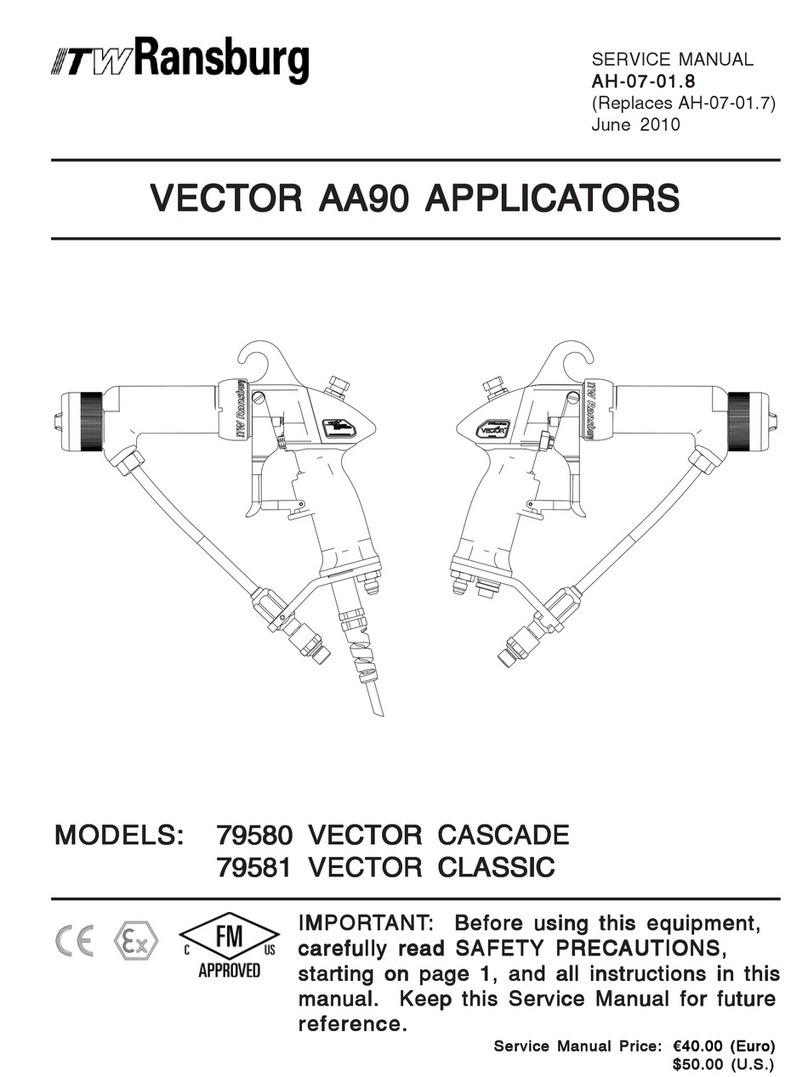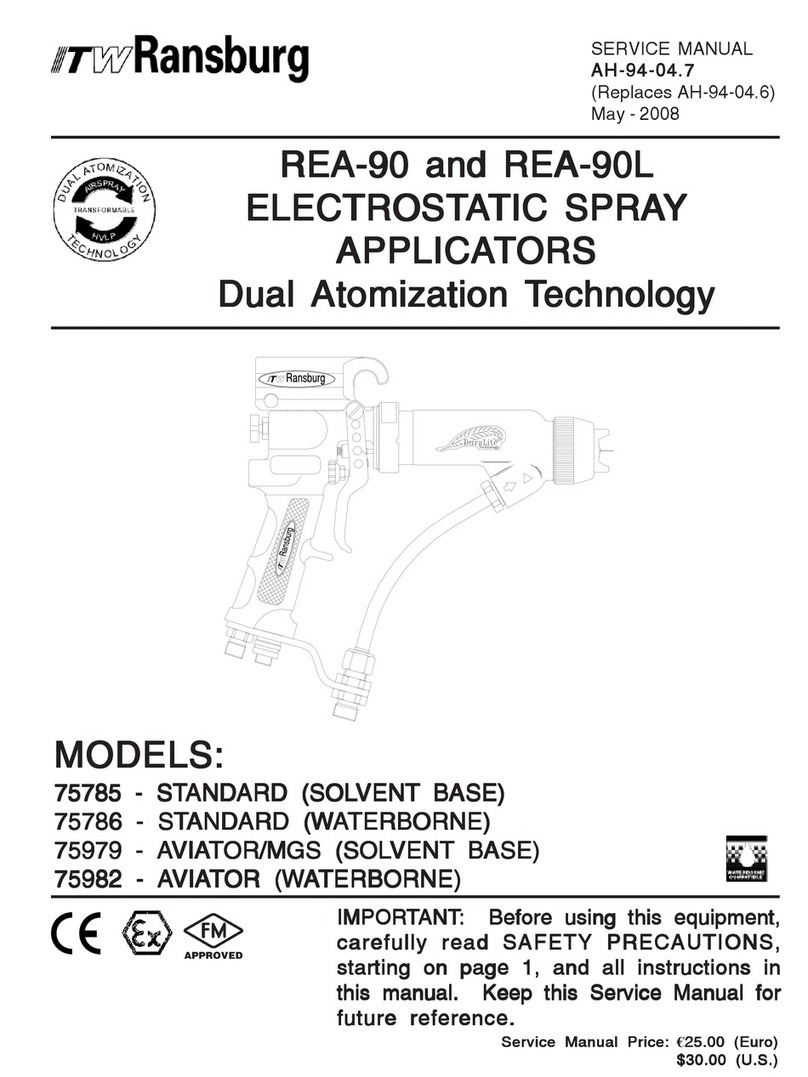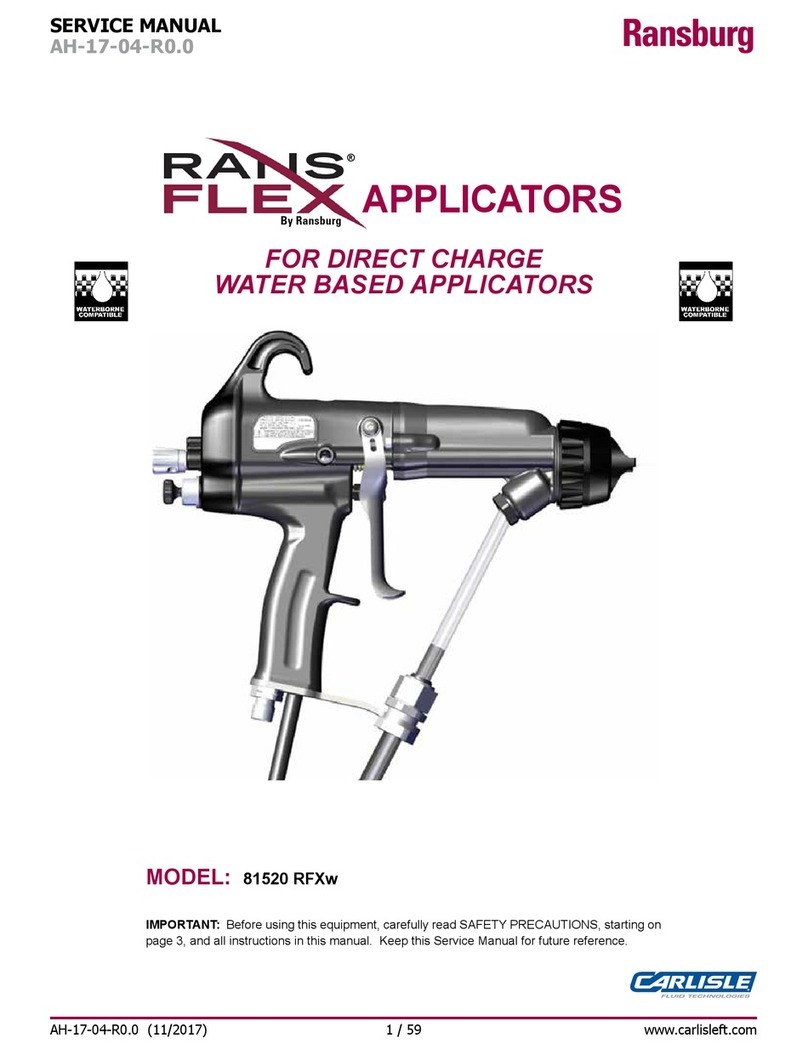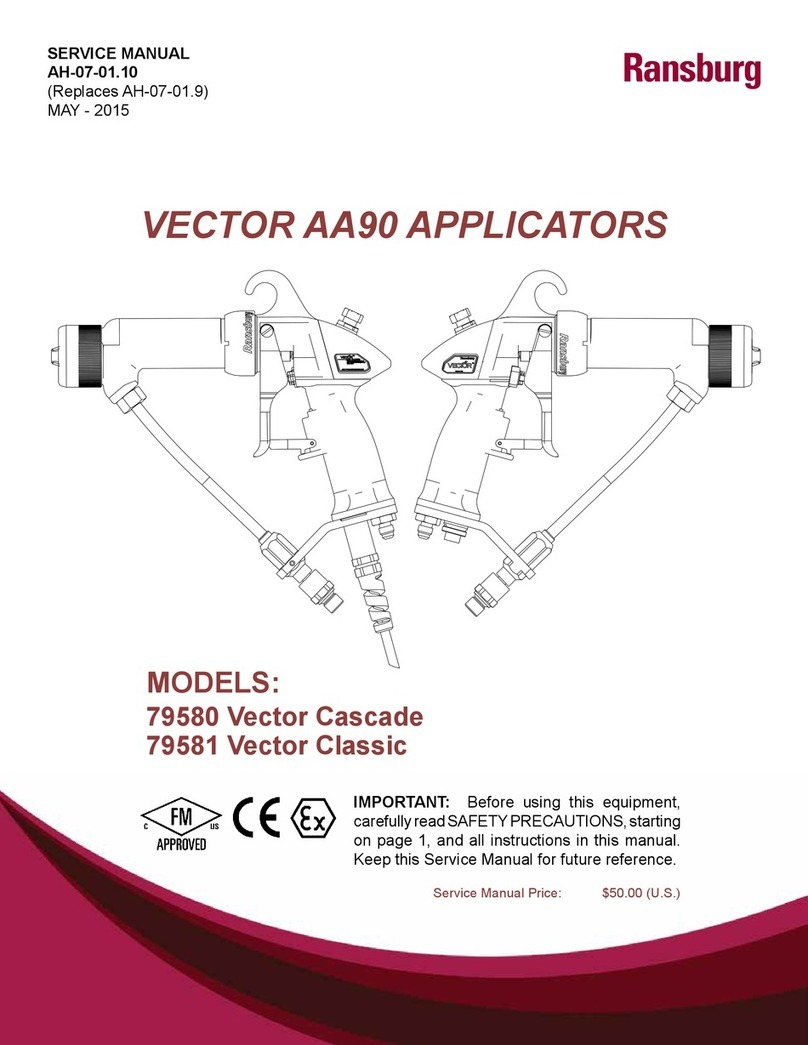
AH-95-02.4
SAFETY PRECAUTIONSSAFETY PRECAUTIONS
SAFETY PRECAUTIONSSAFETY PRECAUTIONS
SAFETY PRECAUTIONS
Before operating, maintaining or servicing any
Ransburg coating system, read and understand
all of the technical and safety literature for your
Ransburg products. This manual contains in-
formation that is important for you to know and
understand. This information relates to USER
SAFETY and PREVENTING EQUIPMENT
PROBLEMS. To help you recognize this infor-
mation, we use the following symbols. Please
pay particular attention to these sections.
A WARNING! states information to alert youA WARNING! states information to alert you
A WARNING! states information to alert youA WARNING! states information to alert you
A WARNING! states information to alert you
to a situation that might cause serious injuryto a situation that might cause serious injury
to a situation that might cause serious injuryto a situation that might cause serious injuryto a situation that might cause serious injury
if instructions are not followed.if instructions are not followed.
if instructions are not followed.if instructions are not followed.
if instructions are not followed.
A CAUTION! states information that tellsA CAUTION! states information that tells
A CAUTION! states information that tellsA CAUTION! states information that tells
A CAUTION! states information that tells
how to prevent damage to equipment orhow to prevent damage to equipment or
how to prevent damage to equipment orhow to prevent damage to equipment or
how to prevent damage to equipment or
how to avoid a situation that might causehow to avoid a situation that might cause
how to avoid a situation that might causehow to avoid a situation that might cause
how to avoid a situation that might cause
minor injury.minor injury.
minor injury.minor injury.
minor injury.
A NOTE is information relevant to the proce-A NOTE is information relevant to the proce-
A NOTE is information relevant to the proce-A NOTE is information relevant to the proce-
A NOTE is information relevant to the proce-
dure in progress.dure in progress.
dure in progress.dure in progress.
dure in progress.
While this manual lists standard specifications
and service procedures, some minor deviations
may be found between this literature and your
equipment. Differences in local codes and plant
requirements, material delivery requirements,
etc., make such variations inevitable. Compare
this manual with your system installation draw-
ings and appropriate Ransburg equipment
manuals to reconcile such differences.
Careful study and continued use of this manual
will provide a better understanding of the equip-
ment and process, resulting in more efficient op-
eration, longer trouble-free service and faster,
easier troubleshooting. If you do not have the
manuals and safety literature for your Ransburg
system, contact your local Ransburg represen-
tative or Ransburg.
SAFETYSAFETY
SAFETYSAFETY
SAFETY
The user MUSTMUST
MUSTMUST
MUST read and be familiar
with the Safety Section in this manual and
the Ransburg safety literature therein
identified.
This manual MUSTMUST
MUSTMUST
MUST be read and thor-
oughly understood by ALLALL
ALLALLALL personnel who
operate, clean or maintain this equipment!
Special care should be taken to ensure that
the WARNINGSWARNINGS
WARNINGSWARNINGS
WARNINGS and safety requirements
for operating and servicing the equipment
are followed. The user should be aware of
and adhere to ALLALL
ALLALLALL local building and fire
codes and ordinances as well as NFPA 33NFPA 33
NFPA 33NFPA 33
NFPA 33
SAFETY STANDARD, SAFETY STANDARD,
SAFETY STANDARD, SAFETY STANDARD, SAFETY STANDARD, prior to installing,
operating, and/or servicing this equipment.
The hazards shown on the following
page may occur during the normal use of
this equipment. Please read the hazard
chart beginning on page 2.
W A R N I N GW A R N I N G
W A R N I N GW A R N I N G
W A R N I N G
!!
!!
!
W A R N I N GW A R N I N G
W A R N I N GW A R N I N GW A R N I N G
!!
!!
!
11
11
1







































